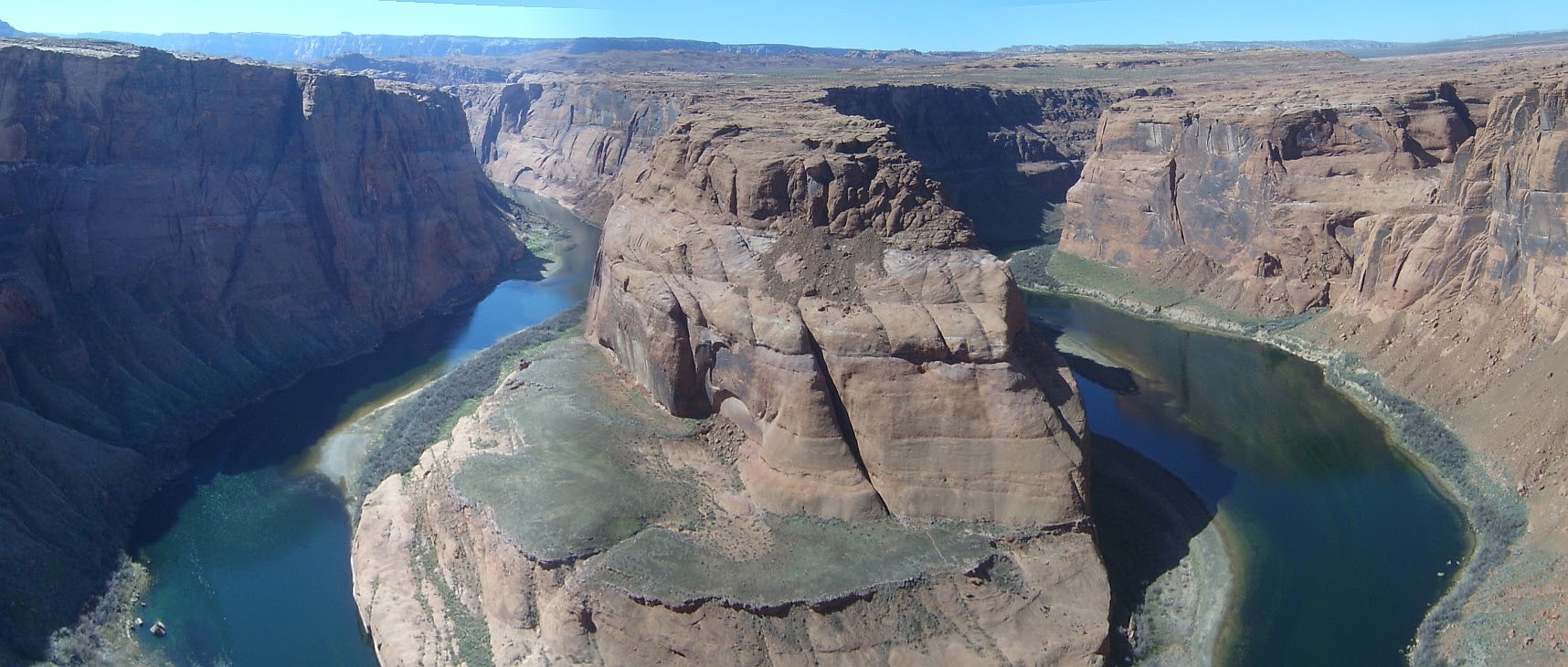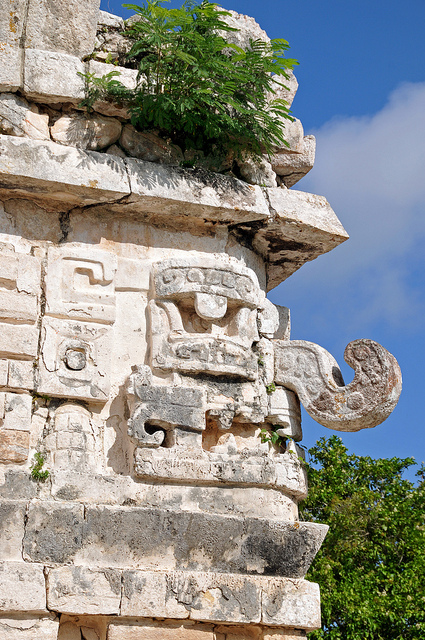11.1: Prelude to Water
- Page ID
- 8848

All life requires water. The hydrosphere (Earth’s water) is an important agent of geologic change. It shapes our planet through weathering and erosion, deposits minerals that aid in lithification, and alters rocks after they are lithified. Water carried by subducted oceanic plates causes melting in the upper mantle material. Communities rely on suitable water sources for consumption, power generation, crop production, and many other things.

In pre-industrial civilizations, control of water resources was a symbol of power [1; 2]. Two thousand-year-old Roman aqueducts still grace European, Middle Eastern, and North African skylines. Ancient Mayan kings used water imagery such as frogs, water-lilies, waterfowl to show their divine power over their societies' water resources [3]. Mask facades of the hooked-nosed rain god, Chac, are prominent on Mayan buildings such as the Kodz-Poop (Temple of the Masks) at Kabah in the drier northern lowlands of the Yucatan peninsula but much rarer in the tropical, wet regions to the south. Control over water continues to be an integral part of the governmental duties of most modern societies.


